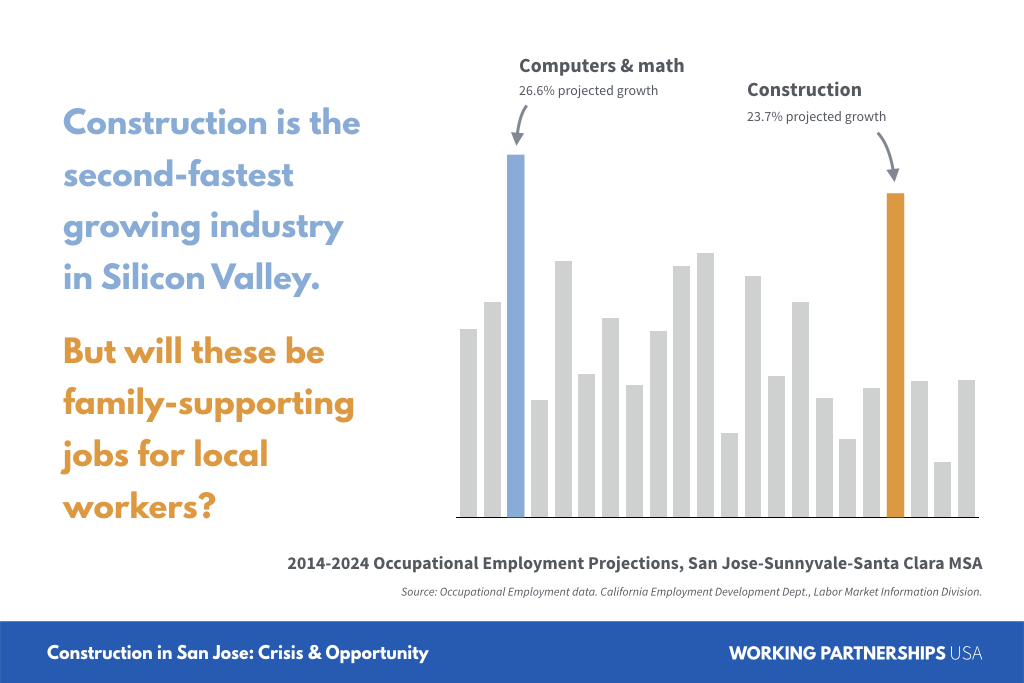Construction is one of the fastest growing industries in Silicon Valley, yet thousands of construction workers are being paid such low wages that they cannot afford to live in the communities they are helping to build.
That is one of the stark findings in our latest report detailing Silicon Valley’s crisis of inequality.
Construction has the potential to produce good jobs for working-class San Jose residents – if both the private and public sectors make the choice to invest in the local workforce.
But the construction industry has split into two models: the “high-road” model in which companies compete on productivity, efficiency, timeliness and quality of work, and the “low-road” model in which companies compete primarily by paying their workforce as little as possible.

These “low road” contractors have created a construction industry where:
- Over half (54%) of blue-collar construction workers employed in Santa Clara County earn less than $40,000 per year
- 42% live in housing that is not affordable at their level of income
- 41% either depend on public health coverage or are uninsured
- And 12% receive food stamps
The Latino community is particularly affected by construction firms that choose the low road. Latino workers are hugely over-represented in the construction workforce – yet are routinely under-paid for their work. In Silicon Valley, Latino construction workers are paid, on average, 38% less than white construction workers.
Closing the pay gap via uniform wage standards and access to training would increase income for Latino construction workers and their families by $387 million annually.
The scale of demand in Silicon Valley’s construction industry represents a tremendous opportunity to transform thousands of jobs into middle-wage careers – and transform thousands of lives by expanding pathways into those careers.
By ensuring workers are paid fairly, creating a level playing field for contractors, and expanding career pathways, our region can take advantage of this construction boom to invest long-term in training the workforce and expanding opportunities.
